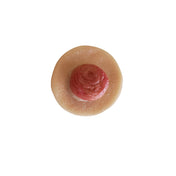Do you know what your blood pressure is?
Around a third of people in the UK have high blood pressure, also known as Hypertension. If left unchecked, high blood pressure can lead to heart attacks, strokes and other diseases.
What are the symptoms of high blood pressure?
One of the problems with high blood pressure is that there are rarely any symptoms. Many sufferers only discover they have a problem with their blood pressure after having a heart attack or a stroke. Around half of all strokes and heart attacks in the UK are caused by high blood pressure.
The only way to find out if you have high blood pressure, before falling ill, is to have a blood pressure check.

What causes high blood pressure?
There are many factors that can cause high blood pressure. These include having too much salt in your diet, drinking too much alcohol, being overweight and not doing enough physical activity.
Having a family history of high blood pressure can also put you at greater risk.
What is Know Your Numbers! Week
Every September, Blood Pressure UK promotes the importance of having regular blood pressure checks, by running ‘Know Your Numbers! Week’. This year the campaign is focusing on the importance of home monitoring, using home blood pressure monitors.

Measure. Modify. Manage
Home blood pressure monitoring is an effective and inexpensive way to keep blood pressure under control.
This year’s theme of Measure, Modify and Manage gives everyone 3 key steps to know their numbers:
- Measure your blood pressure to see if it’s under control
- Modify your lifestyle if necessary
- Manage your blood pressure and your health to beat ‘the silent killer’
What do the blood pressure numbers mean?

When you measure your blood pressure, two sets of numbers are given.
The number at the top shows Systolic blood pressure and is the highest level your blood pressure reaches when your heart beats.
The number at the bottom is the Diastolic blood pressure and is the lowest level your blood pressure reaches as your heart relaxes between beats.
A healthy range for blood pressure is shown in the green area on the graph.
Only one of your numbers needs to be higher than it should be, to be diagnosed with high blood pressure. If the top number is 140 or above or the bottom number is above 90, then this is considered high blood pressure and you are at increased risk of serious health problems.
Doctors and nurses recommend measuring your blood pressure a number of times across a few weeks, as one high reading doesn’t necessarily mean you have high blood pressure.
If you are concerned about your blood pressure reading, then consult your doctor.
How can I reduce high blood pressure?
There are steps you can take to lower your blood pressure and reduce the risk of developing serious illnesses.
- Keep active and maintain a healthy weight
- Stop smoking
- Reduce alcohol intake
- Eat a healthy diet with lots of fruits and vegetables and reduce the level of salt and fats in your diet.
Your doctor may also suggest taking medication to lower your blood pressure.
Keeping an eye on your blood pressure with a home monitor, is the best way to keep an eye on those important numbers.
How to use an automatic blood pressure monitor at home
Automatic blood pressure monitors used in the home are simple to use.
Our recommended model comes with cuff fit and error indicators, which light up when the cuff is applied too loosely or the user is moving, which can impact the accuracy of the readings.
Using the blood pressure monitor correctly will produce accurate results.
Video of blood pressure monitor
Blood pressure UK have a great selection of resources to help you learn how to measure your blood pressure at home.
If you’re supporting clinicians to use blood pressure monitors, these simulators will meet your training needs.

























